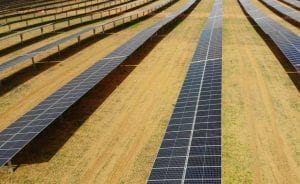The Australian Capital Territory continues its nation-leading effort to boost the uptake of electric vehicles, this week revealing plans to roll out EV charging stations across the capital city.
The Territory’s minister for climate and sustainability Shane Rattenbury said on Tuesday that 50 new standard dual electric vehicle charging stations would be installed at government sites across Canberra over 2018-19.
The $456,000 rollout will be funded by the Territory government in the upcoming June Budget.
“The ACT is again proof positive that local jurisdictions are getting the job done when it comes to delivering real action on climate change,” Rattenbury said in comments on Tuesday.
“With transport is expected to create over 60 per cent of the ACT’s emissions by 2020, mostly from private cars use, we’re acting to ensure that the Territory is well-placed to transition towards electric vehicle use – in line with global market trends.
“As a major employer in the Territory, with a significant fleet of vehicles, it is also important that the ACT does our part in promoting sustainable travel.
“The Government has already begun working with private sector partners to deliver this investment and support public awareness of electric vehicle use.”
The installation of the charging stations complements the recent mandate for all newly leased government vehicles to be zero emissions from 2021 – announced in April as part of what is easily the most ambitious transition plan to electric vehicles in Australia.
The transport strategy includes a study of solar-powered charging stations in car parks, vehicle-to-grid studies, use of transit lanes, and salary sacrifice options, as well as parking and building requirements.
“Zero emissions vehicles offer a clean, reliable and smart option for travel in Canberra,” Rattenbury said in April, when the policy was unveiled.
“From 2020 in the ACT, all electricity will be from renewable sources – so using a zero emissions vehicle charged in the ACT will result in no greenhouse gas emissions.”
The announcement on the EV charging network also comes less than two weeks after the ACT government ratcheted up its emissions reduction target to aim for net zero emissions by 2045, instead of 2050.
As we reported at the time, the ACT already expects to source the equivalent of 100 per cent of its electricity needs from renewables by 2020 – itself an accelerated target – so is now turning its attention to the transport sector, as the next key target for reduction.
As of last month, the ACT government car fleet had just 17 battery electric vehicles, and 7 plug-in hybrids, along with eight electric bicycles. The Territory has also begun trials of two battery electric buses and one hybrid bus running on diesel, and proposes 20 hydrogen powered fuel cell vehicles over the next two years.








